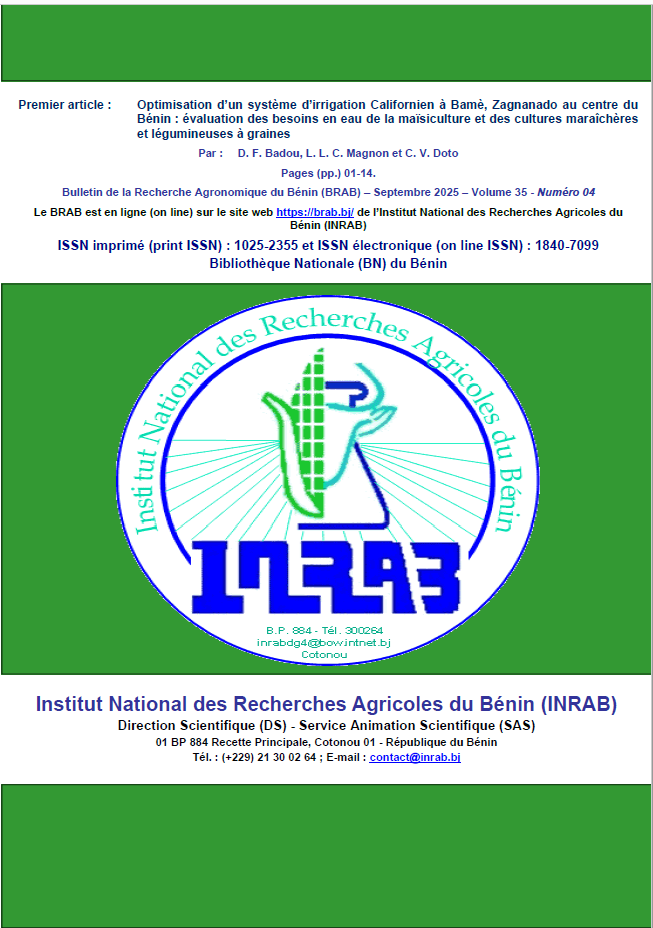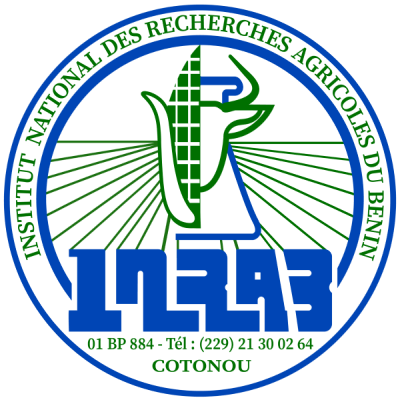Optimization of a Californian Irrigation System in Bamè, Zagnanado in south-eastern Benin: Assessment of the water requirements for maïze, vegetable and grain legume crops
DOI:
https://doi.org/10.62344/2pf24398Keywords:
Agricultural water management, Irrigation scheduling and application rates, Tomato (Solanum lycopersicum), Groundnut (Arachis hypogaea), Bamè Lowland (Benin)Abstract
Population growth and climatic hazards are major challenges for agriculture and food security. Irrigation, when managed effectively, can serve as a viable solution for addressing the growing demand for food. The objective of the study was to optimise the use of a Californian irrigation system, currently under construction necessary for the production of market garden crops, pulses and maize in the Bamè Lowland. To achieve this, crop water requirements and irrigation doses were quantified and an irrigation schedule was developed for plots of 2,500 m². The methodology employed encompassed a comprehensive review of relevant documents, the collection of data on climate, soil characteristics, and crop cultivation practices, and the calculation of irrigation parameters utilising the water balance method. The study identified the peak water requirements as 218 mm for tomatoes and 198 mm for peppers, which occurred in January during the mid-season. For groundnuts, the water requirements were determined to be 134 mm in November (back season), 98 mm in June for maize (mid-season), and 12 mm in August for soya. Notably, the latter crop did not require watering in May, June and July, the first months of its cycle. The total requirement for the 37.6 hectares of crops is 660 mm, equivalent to 6,600 m³/ha, distributed across January, June, August and November.

Published
Issue
Section
License
Copyright (c) 2025 Bulletin de la Recherche Agronomique du Bénin

This work is licensed under a Creative Commons Attribution-NoDerivatives 4.0 International License.
Les articles publiés par le Bulletin de la Recherche Agronomique du Bénin sont en libre accès. Ils sont gratuits pour tout le monde, immédiatement téléchargeables dès la publication et distribués sous la licence CC BY-NC-ND (https://creativecommons.org/licenses/by-nc-nd/4.0/).







